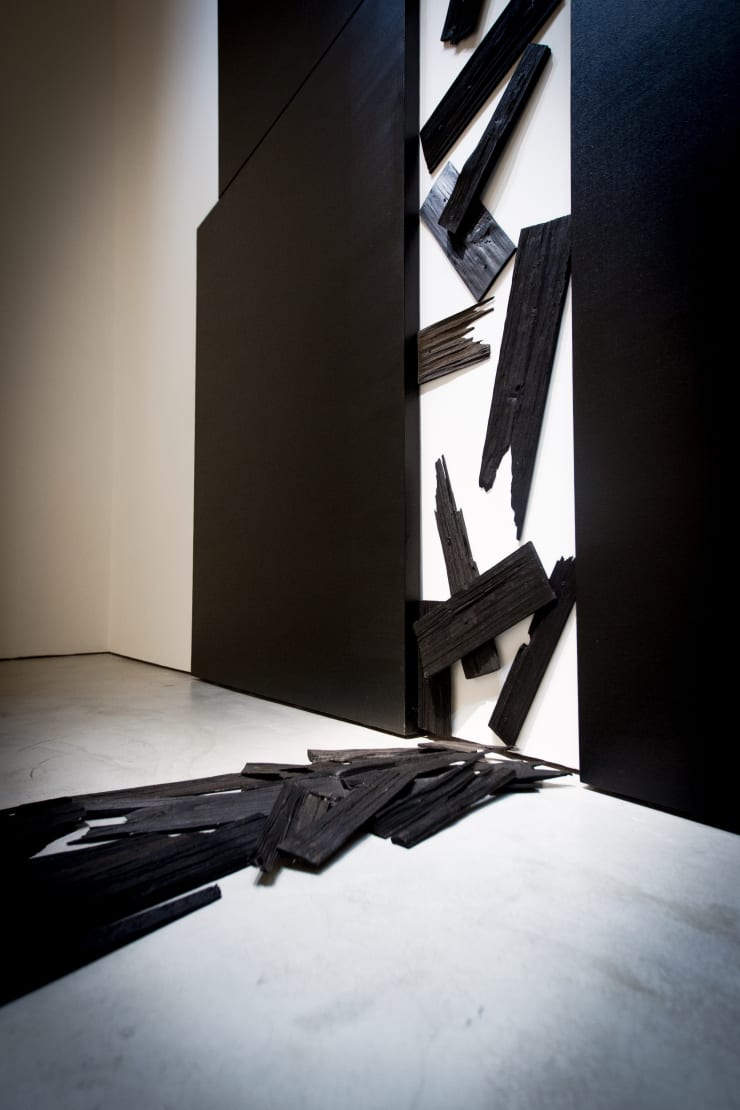The Capital: Wang Huaiqing Solo Exhibition
Tina Keng Gallery is pleased to announce Wang Huaiqing’s solo exhibition The Capital,on view from September 6 to October 12. The exhibition revolves around the Forbidden City in Beijing — the Chinese imperial palace from the Ming Dynasty to the end of the Qing Dynasty — a symbol of China’s cultural and historic heritage for nearly 500 years. Born and raised right in the Chinese capital, Wang takes inspiration from the city where he grew up. Memory, time and oriental culture are interlaced in his diverse body of works which examines and questions the meaning of tradition. Playing with lines and shapes, he simplifies and rearranges the composition of an object to alter perception and provide a new point of view — an artistic liberation of the Chinese culture and a reflection of the history. Comprising 10 oil paintings, the solo exhibition offers an in-depth view into Wang’s aesthetic pursuit and a rare opportunity to see Eastern culture through his creative lens.
The exhibition features Wang’s classic works as well as never-before-seen pieces. In Aura of the Great Ming (1991), the artist turns a two-dimensional chair into a creative tool to visualize his idea of planarity. A pivotal and signature piece, this work laid foundation for Wang’s unique aesthetic interpretation of deconstruction and reconstruction. Night Revel-2(1998) is a tribute to an ancient painting titled Han Xizai's Night Revel. The inspiration comes from the traditional Chinese craft of paper cutting, but Wang’s intention lies deeper — by eliminating the subject (reveler) and leaving the object (flagon, chair, cane, and shoes) in the imagery, he explores the relationship between subjectivity and objectivity. On view for the first time, Out of the Mountains,which is composed of 6 panels of paintings and numerous wood blocks, constructs a way in and out of the mysterious mountains within the canvas, reinterpreting shan shui from the Song and Yuan Dynasties. The Chinese Emperor series stems from realist portrait painting, which prospered in the Tang Dynasty. “From the Portrait of a Cardinalby El Greco (1514-1614) to Pope Innocent Xby Velazquez Diego (1599-1660), what they depict is the image of the person, and what I’m going to present is the thoughts behind the figure,” Wang once said. Thoughts behind the figure indeed materialize as he wields his paintbrush, and each brushstroke exudes history.
Wang Huaiqing
Born in Beijing in 1944, Wang began his pursuit of art in 1964 in the Central Academy of Fine Arts and Crafts. Later in the Cultural Revolution, he spent years reforming through labor and working as a stage designer in the army. He endured the hardship and never once gave up on pursuing art. From the 70s to the 80s, he had several notable exhibitions overseas. Ever since then, his work has been in both public and private collections, and received international recognition. A chance to witness Wang’s masterful works, The Capitalbecomes his artistic palace where he instills resonant symbolism into Chinese traditions, and the result speaks volume.












